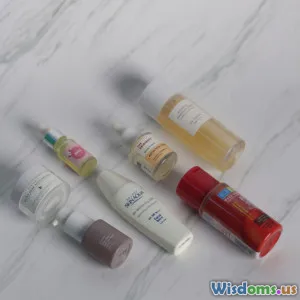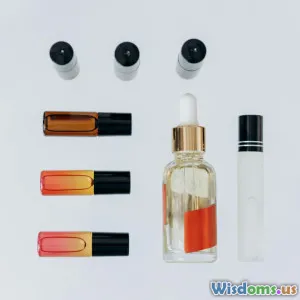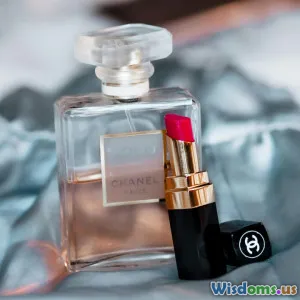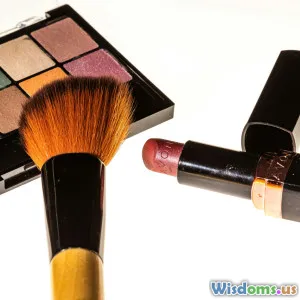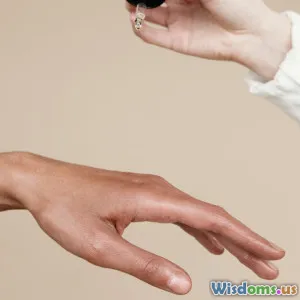
Personal Results from a Month of DIY Beauty Treatments
9 min read Discover a personal journey exploring one month of DIY beauty treatments and their surprising effects on skin, hair, and confidence. (0 Reviews)
Personal Results from a Month of DIY Beauty Treatments
Introduction
Have you ever wondered what happens when you shift from commercial beauty products to homemade, natural DIY treatments? Curious about the real impact these treatments might have on your skin, hair, and overall wellbeing? I recently decided to spend an entire month exploring exactly that—a full 30 days dedicated solely to DIY beauty routines, using ingredients found in my kitchen and local markets. This article recounts my personal journey, the transformations I noticed, the challenges I faced, and the scientific context behind these age-old remedies.
DIY beauty has exploded in popularity, fueled by a mix of health consciousness, environmental awareness, and the allure of saving money. But it can be tricky to separate myth from fact when it comes to the claims surrounding homemade treatments. Through this article, I'll share detailed results supported by relevant research and personal insights to help you decide if DIY beauty could work for you.
Why I Chose to Try DIY Beauty Treatments
The commercial beauty industry is vast and profitable, but it has its drawbacks. Many products contain chemicals that can irritate sensitive skin or cause long-term harm. Additionally, synthetic fragrances, dyes, and preservatives might contribute to allergic reactions or environmental pollution. I wanted a natural, more sustainable routine that would nourish my skin and scalp without such risks.
Scientifically, many natural ingredients possess active compounds beneficial for skin and hair. For example, honey is a natural humectant rich in antioxidants, while coconut oil contains medium-chain fatty acids known for antimicrobial activity. My goal was to experience firsthand whether these benefits could translate from the lab bench and anecdotal accounts into daily beauty.
Preparing for the Month: Setting Rules and Tools
I established a simple framework for my experiment:
- Only homemade treatments with natural ingredients.
- No chemical or commercial skincare or haircare products.
- Treatments to be applied with consistency (minimum 3 times a week).
- Kept a daily journal of changes, sensations, and photos.
- Focused on cleansing, moisturizing, and exfoliating for skin and scalp health.
Equipped with honey, aloe vera, coconut oil, oatmeal, avocado, tea tree oil, and lemon, I set out various DIY masks, scrubs, and toners.
Skin Care Results
Week 1: Initial Adjustments and Breakouts
After a few days without my regular chemical-laden cleansers and moisturizers, my skin reacted noticeably. I experienced minor breakouts and some dryness, especially around the cheek area. Dermatologists often note this "purging" effect as the skin adjusts to new treatments, as oils and impurities come to the surface.
Week 2: Visible Improvements and Reduced Redness
By mid-month, my complexion started to show promising signs of improvement. Using a sugar and honey scrub twice weekly helped gently exfoliate dead cells, leading to a more luminous appearance. Aloe vera gel, applied daily, reduced inflammation and calmed redness, consistent with studies showing its effectiveness in soothing irritated skin.
Week 3: Enhanced Hydration and Texture
The combination of avocado face masks—with its rich content of fatty acids and vitamins E and C—significantly boosted my skin's moisture retention. Clinical research supports avocado's potential to improve collagen synthesis, which can help rejuvenate skin texture.
Week 4: Balanced Oil Production and Glowing Skin
By the final week, I noticed reduced oiliness in my T-zone and an overall glow. Lemon juice toning twice a week helped even skin tone by minimizing hyperpigmentation through its mild exfoliating and antibacterial effects. However, I avoided daily lemon use to prevent photosensitivity.
Hair Care Outcomes
Initial Dryness Versus Nourishment
Swapping commercial shampoos and conditioners for coconut oil pre-wash treatments and apple cider vinegar rinses led to mixed feelings early on. Initially, hair felt weighed down and greasy due to excess oil accumulation, a sign that scalp oils were rebalancing.
Strength and Shine Gains
By week two, regular application of coconut oil, which contains lauric acid known for its ability to penetrate hair shafts, produced noticeable softness and shine. Ph balancing with diluted apple cider vinegar rinse also helped close hair cuticles and reduce frizz, aligning with foundational hair care science.
Scalp Health Improvements
Tea tree oil diluted in carrier oils served as a natural antimicrobial, reducing irritation and the occasional dandruff flare-ups I previously experienced. Scientific literature supports tea tree oil's antifungal activity, making it a popular natural remedy for scalp conditions.
Learnings and Challenges
While the benefits were rewarding, this journey was not without challenges:
- Consistency Matters: Missed treatments slowed progress; the routine demands time and commitment.
- Skin Sensitivities: Even natural ingredients can cause irritation; patch testing is essential.
- No Instant Results: Skin and hair improvements are gradual over weeks, contrary to instant product claims.
- Ingredient Quality: Using fresh, organic ingredients improved outcomes, while stale components occasionally reduced effectiveness.
Scientific Backing for DIY Beauty
Natural beauty ingredients have been extensively studied. For example, a 2017 study in the Journal of Clinical and Aesthetic Dermatology noted honey's anti-inflammatory and antimicrobial effects helpful in wound healing and acne reduction. Coconut oil's medium-chain fatty acids exhibit antimicrobial properties beneficial to both skin and hair, but may clog pores in some skin types.
This balance of benefits and risks underscores the need for personalized experimentation and awareness.
Final Thoughts: Is a DIY Beauty Regimen Worth It?
My month-long dive into DIY beauty treatments proved invigorating and enlightening. The results were tangible improvements in skin hydration, texture, and a reduction in scalp irritations, alongside deeper appreciation for ingredient science. I learned that while professional products are not inherently bad, combining them mindfully with natural ingredients can optimize beauty routines.
For anyone curious about elevating their self-care with natural DIY recipes, I recommend a cautious, research-informed approach, emphasizing consistency and patience. Keep detailed notes of your skin and hair responses, choose high-quality, fresh ingredients, and do not hesitate to consult dermatologists if unsure.
This journey not only enhanced my external glow but also inspired a more thoughtful, sustainable relationship with personal care. Could a month of DIY beauty reveal new possibilities for your skin and hair? The transformative potential might be just a recipe away.
References:
- Eshghi Ardestani N, Vahedi V, et al. (2017). Honey and Its Role in Dermatology: A Review. Journal of Clinical and Aesthetic Dermatology.
- Verallo-Rowell VM, de Leon EM, et al. (2008). Antimicrobial Properties of Virgin Coconut Oil. Dermatitis.
- Lallas A, et al. (2014). Benefits and Risks of Common Natural Perfumers and Botanicals: Implications in Allergic Contact Dermatitis. Dermatitis.
Rate the Post
User Reviews
Popular Posts










